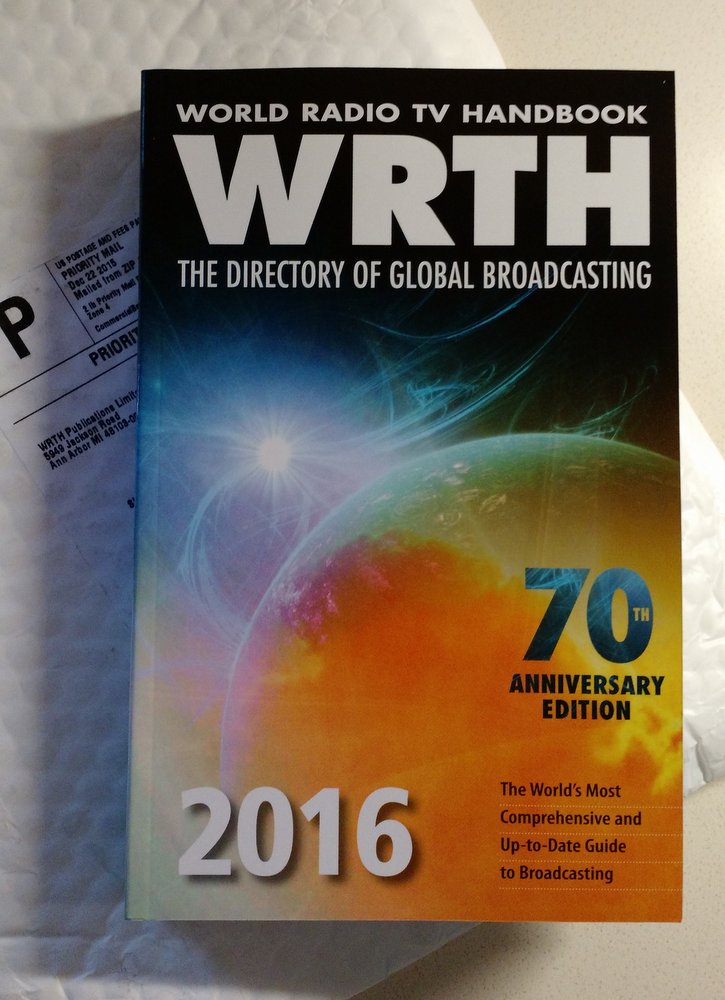
I received my copy of the 2016 World Radio and TV Handbook (WRTH) directly from the publisher on Christmas Eve 2105. As many SWLing Post readers know, I always look forward to receiving this staple radio reference guide each year. This is a special year for the publication, too: it’s their 70th edition!
I should note that it was a special edition of the WRTH for me as well: upon request, I contributed two receiver reviews and a feature article. It was an honor working with the WRTH publication staff and being included in the 70th edition.
WRTH’s team of noted DXers from around the world curate frequencies and broadcaster information by region; while I’m not sure how they orchestrate all of this, the end result is truly a symphony of radio information. In addition to broadcaster listings, WRTH’s radio reviews, feature articles, and annual HF report make for excellent reading.
But the WRTH isn’t just a frequency guide: the publication always devotes the first sixty or so pages to articles relating to various aspects of the radio hobby. Following, I offer a quick overview of these.
The first article always features a WRTH contributor (indeed, it’s this very network of contributors that make WRTH and its listings such a success): this year, Dave Kenny tells us how he got interested in the hobby and what being a contributor means to him. It’s fascinating to read about how his SWLing hobby turned into a career as he worked for BBC Monitoring for many years.
The second set of articles is always my favorite: WRTH receiver reviews.
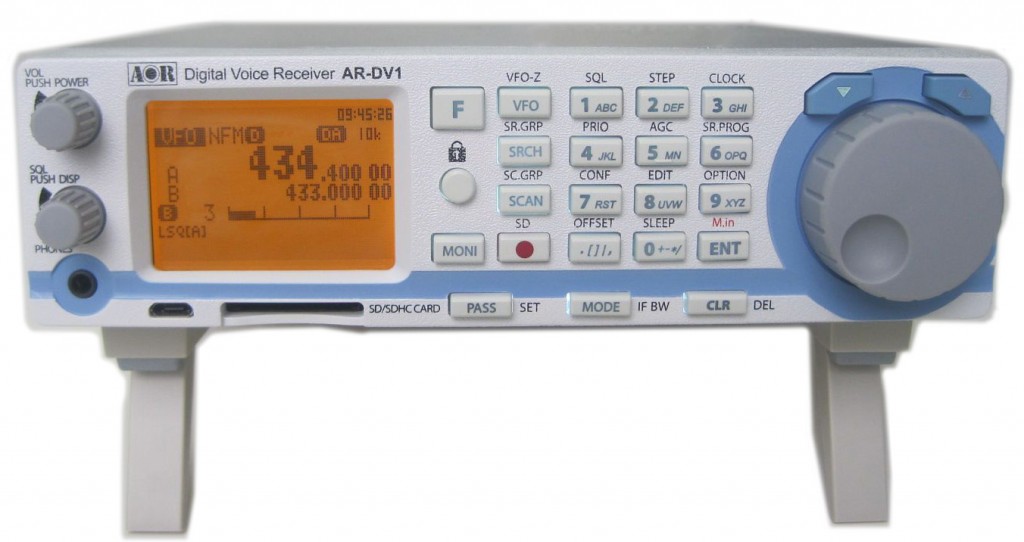
This year, WRTH reviewed the C.Crane CC Skywave (an update to one of my reviews on the Post). They also review the new AOR AR-DV-1 (above), the Etón Satellit Grundig Edition (which impressed them favorably), the Tecsun PL-680 (again, an update of one of my Post reviews), and the Nti ML200 Megaloop.
The following article is “A Brief History of World Radio TV Handbook” which traces the publication’s history back to the Nazi occupation of Denmark in World War II. It’s a fascinating read and puts the publication into context as technology, international broadcasting and the WRTH team have evolved over the course of 70 years.
In the next article, UK MW & LW Broadcasting: the first 95 years, WRTH contributor Dave Porter (G4OYX), outlines the history and current use of MW & LW broadcasting. A fascinating history written by a former BBC senior transmitter engineer!
Next is the added feature 70 Years of Reception which looks at receiver technology and innovations that have had an impact over the course of WRTH’s long history. They highlight a few select receivers over the decades like the RCA AR-88, Eddystone 840-A, Eddstone EC-10, Barlow Wadley XCR-30, Kenwood R-1000, Drake R8 and the WinRadio Excalibur Ultra.
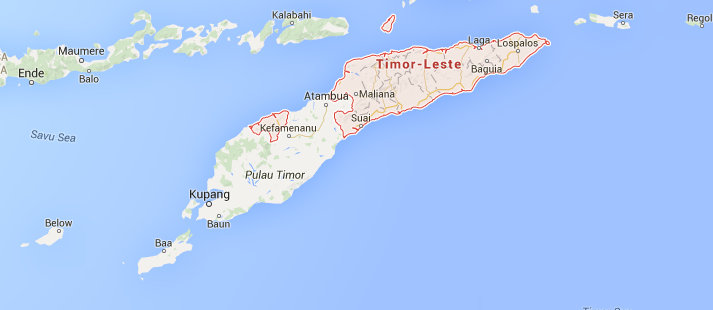
Following this, WRTH contributor, David Foster, features an article on Radio in Timore-Leste. Foster has been involved in Timore-Leste for many years–his article gives excellent insight into this part of Southeast Asia. Indeed, I always look forward to David Foster’s articles in WRTH!
This year, WRTH also features an updated and revised article I wrote for them on The Future of Shortwave. Again, I’m honored to have contributed to the 70th edition of WRTH.
WRTH International Editor, Sean Gilbert, also wrote an excellent Guide to SDRs–a brilliant little summary of what SDRs are, how they work, and some common terminology used in reviews.
The final article–a tradition–is the WRTH HF propagation report/forecast by Ulf-Peter Hoppe. Always an informative read (even if the prediction isn’t positive for DXers).
As expected, the 70th is another great edition of the World Radio TV Handbook.
As I’ve said many times, though I use online frequency databases fairly regularly, there is just no replacement for a good printed frequency guide–especially for all of my off-grid DXing.
For DXers who collect QSL cards, you’ll find that broadcaster contact information in WRTH is often more up-to-date than a broadcaster’s own website. When readers ask me for station contact information, it is the current WRTH I reference.
Not only does WRTH contain more in-depth information on broadcasters and schedules, but it makes for quick reference, and doesn’t require a computer or Internet connection–much like, well, your shortwave radio.
Purchase your copy of WRTH 2015 directly from WRTH’s publishers, or from a distributor like Universal Radio (US) and Amazon.com (US), or Radio HF (Canada).
SWLing Post contributor, Richard Langley (Canada), also noted that BookDepository.com, a U.K.-based seller, is offering WRTH at a discount and with free worldwide shipping. Thanks for the tip, Richard!

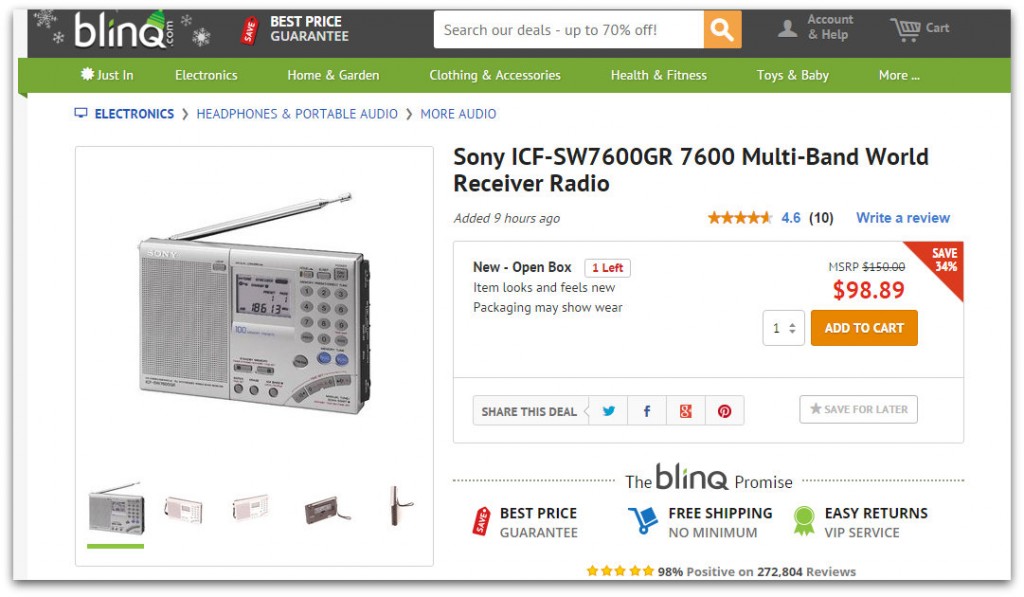
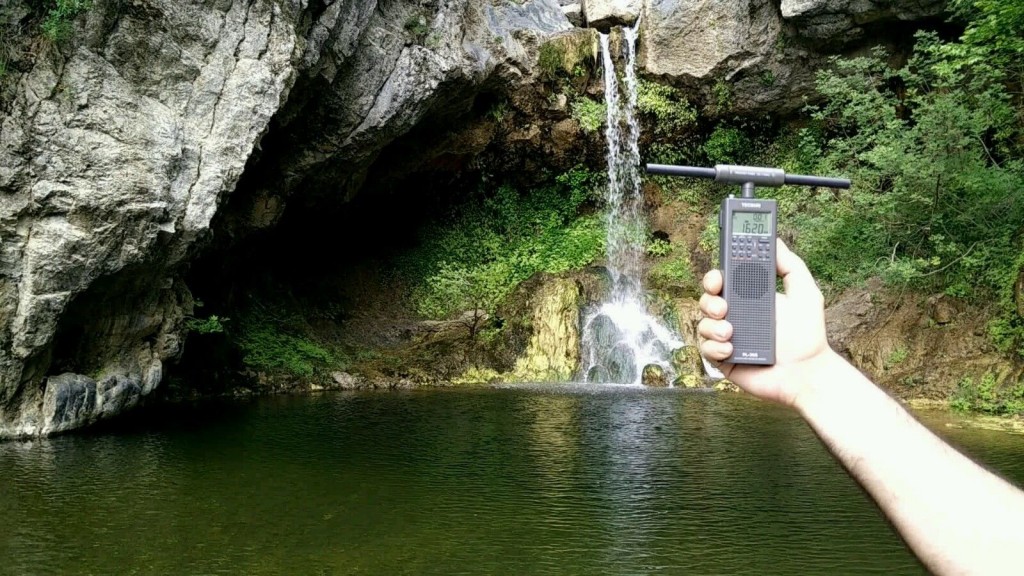
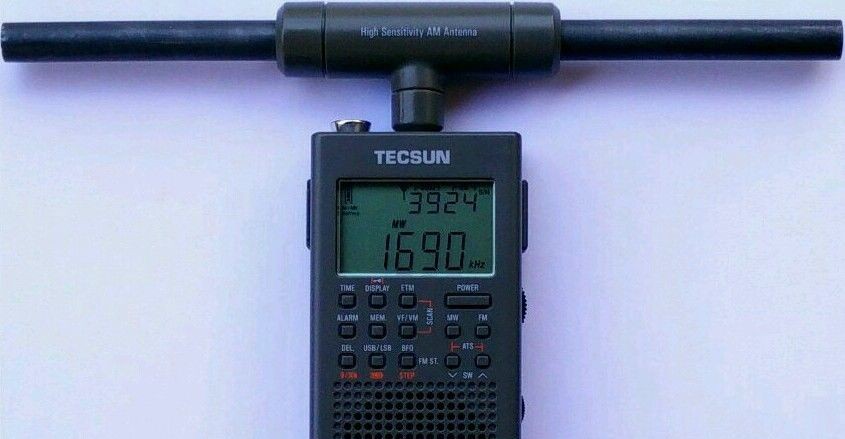
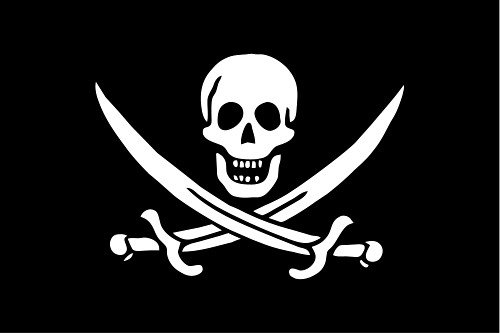 Many thanks to Chris Smolinski at HF Underground who has released his
Many thanks to Chris Smolinski at HF Underground who has released his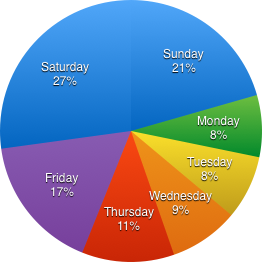
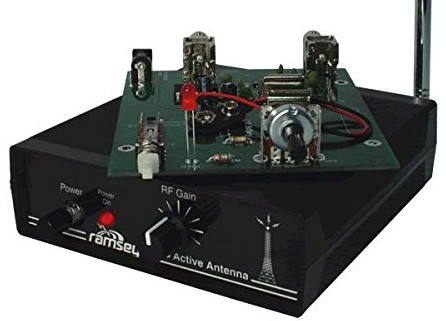 Ramsey Electronics recently announced the following
Ramsey Electronics recently announced the following  For more than 4 decades, the name Ramsey Kits has been synonymous with some of the neatest and the greatest electronic products and hobby kits for the do-it-yourself hobbyist. In those 40+ years, we always thought “outside the box” when we designed a new kit, making us known worldwide as the number one hobby kit manufacturer.
For more than 4 decades, the name Ramsey Kits has been synonymous with some of the neatest and the greatest electronic products and hobby kits for the do-it-yourself hobbyist. In those 40+ years, we always thought “outside the box” when we designed a new kit, making us known worldwide as the number one hobby kit manufacturer. 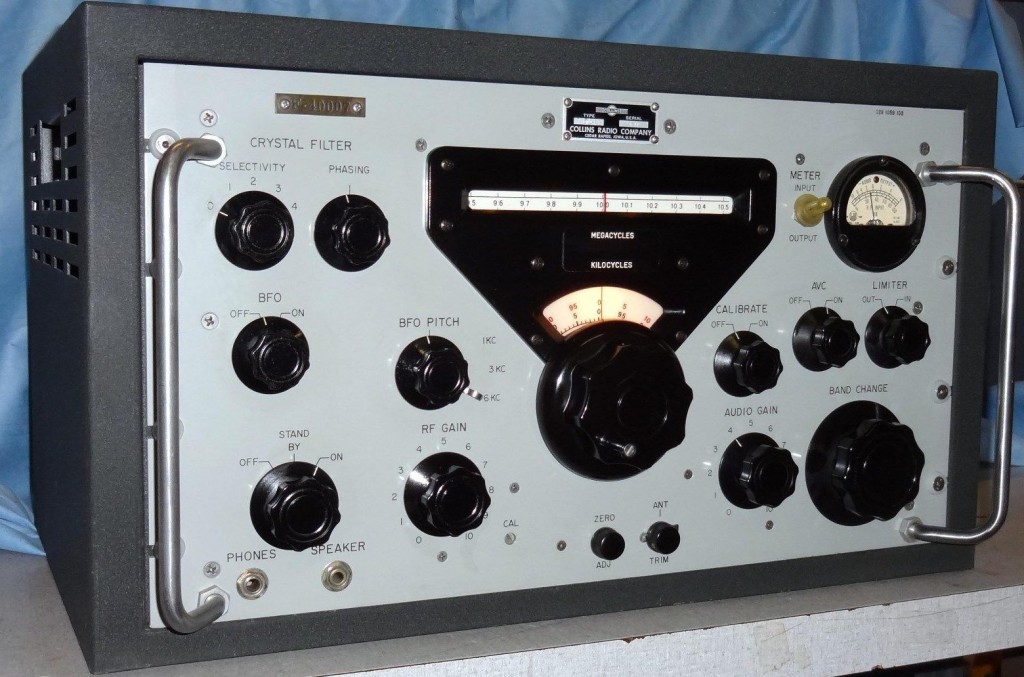 Many thanks to SWLing Post contributor, Dan Robinson, who writes:
Many thanks to SWLing Post contributor, Dan Robinson, who writes: I’m pleased to see that the new owner of TEN-TEC has now been made public; I’d been asked to keep this quiet until a formal announcement was made.
I’m pleased to see that the new owner of TEN-TEC has now been made public; I’d been asked to keep this quiet until a formal announcement was made. From Mike Dishop of
From Mike Dishop of